Abstract
The effects of various inhibitors of DNA precursor metabolism were studied on Dictyostelium discoideum growing in a defined axenic medium. Fluorodeoxyuridine was an effective inhibitor of growth at 20 micrograms/ml; this inhibition was not reversed by thymidine, suggesting that in this organism fluorodeoxyuridine is not acting on thymidylate synthetase alone. Removal of the required nutrient, folic acid, from the medium resulted in a lower maximum level of growth than in the control. The inclusion of adenine, guanine, serine, and thymidine in the minus-folic acid medium allowed the final growth level to approach that of the control. Methotrexate, a folic acid analog and dihydrofolate reductase inhibitor, blocked growth completely at 200 micrograms/ml; its effect was partly reversed by the addition of adenine, guanine, serine, and thymidine. Aminopterin, another folic acid analog, had only a temporary effect on cell multiplication, followed by a return to exponential growth. Trimethoprim was ineffective up to 200 micrograms/ml. Hydroxyurea blocked growth in the concentration range of 150 to 300 micrograms/ml. These results indicate that several of these inhibitors are effective for altering thymidine monophosphate synthesis in D. discoideum and hence may be useful for studies of DNA replication and repair and for the isolation and characterization of thymidine-requiring mutants.
Full text
PDF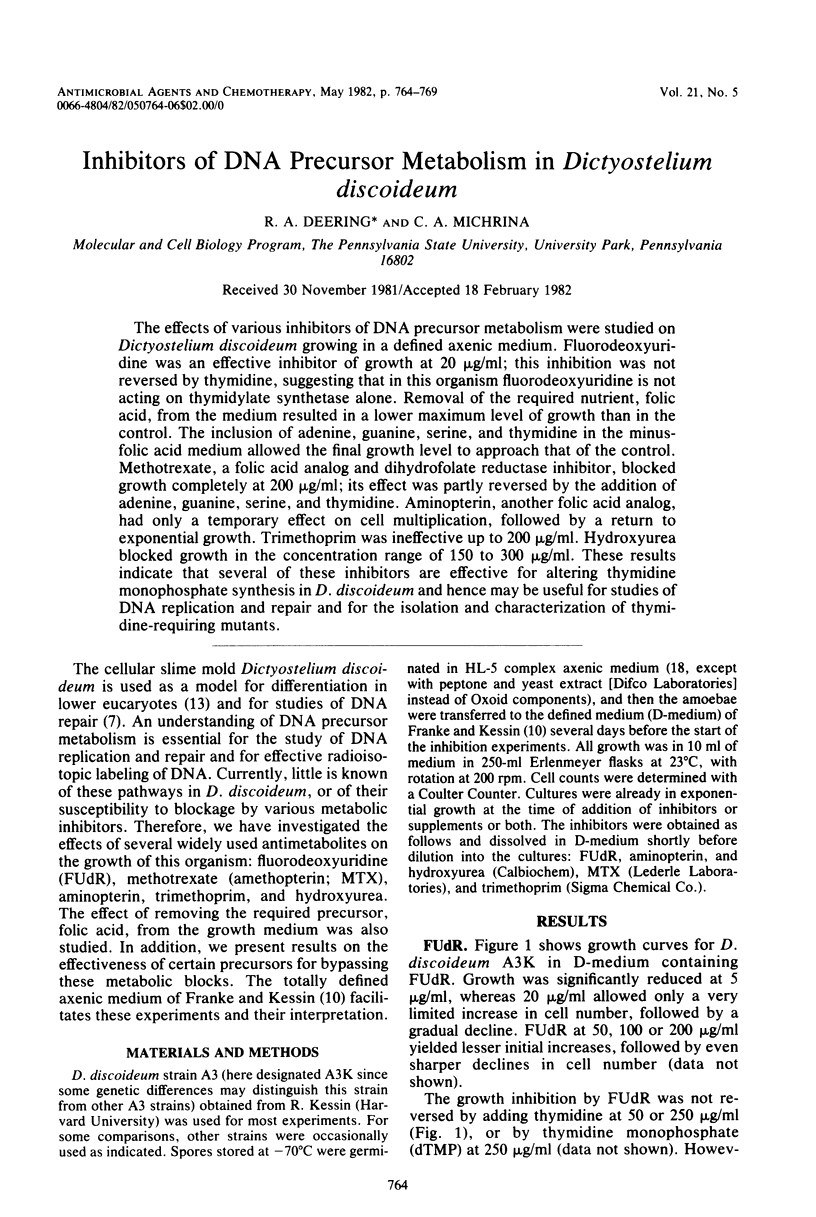
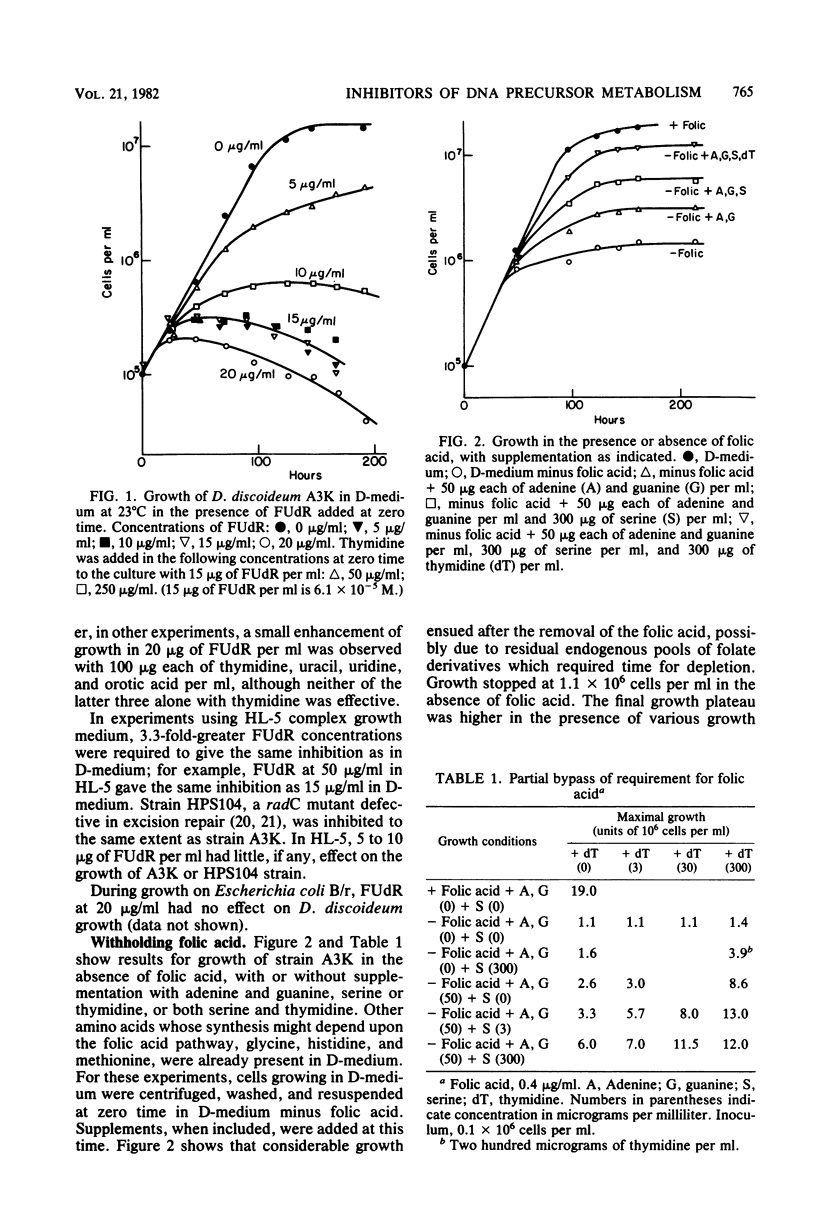
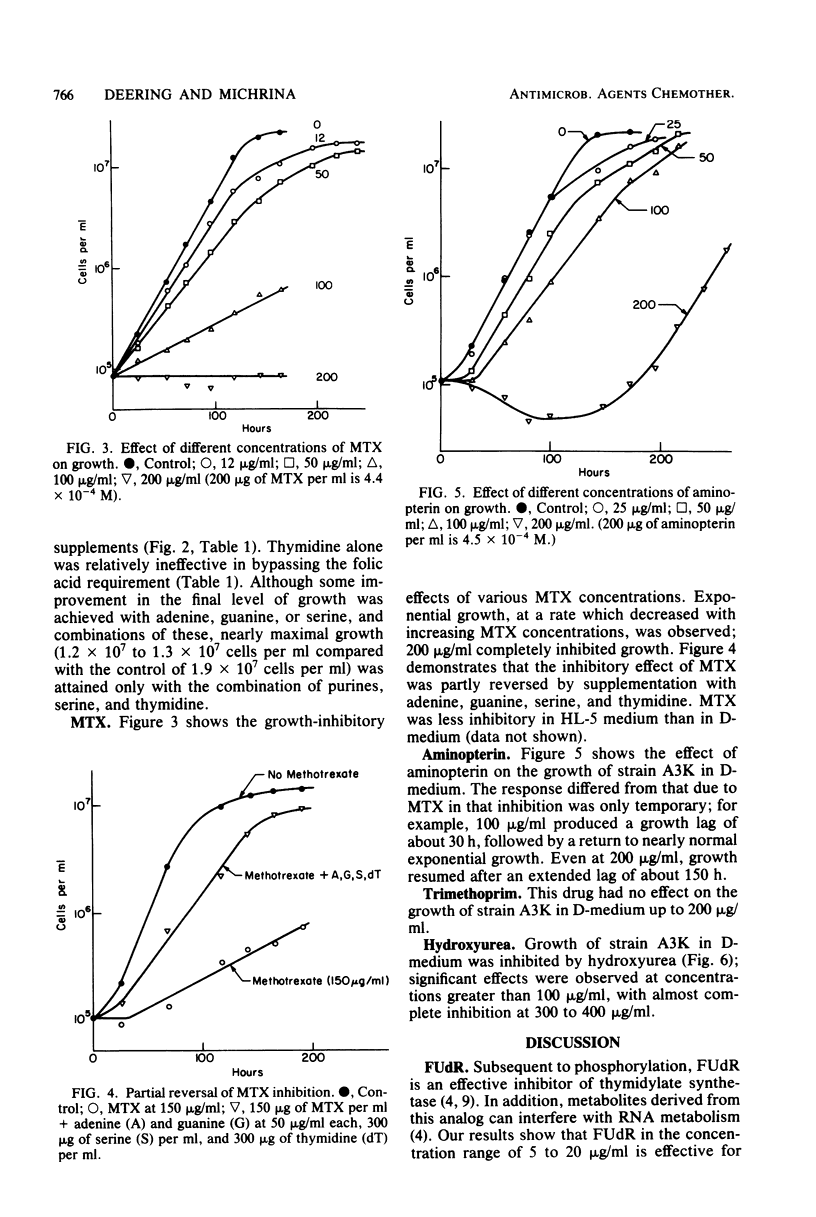
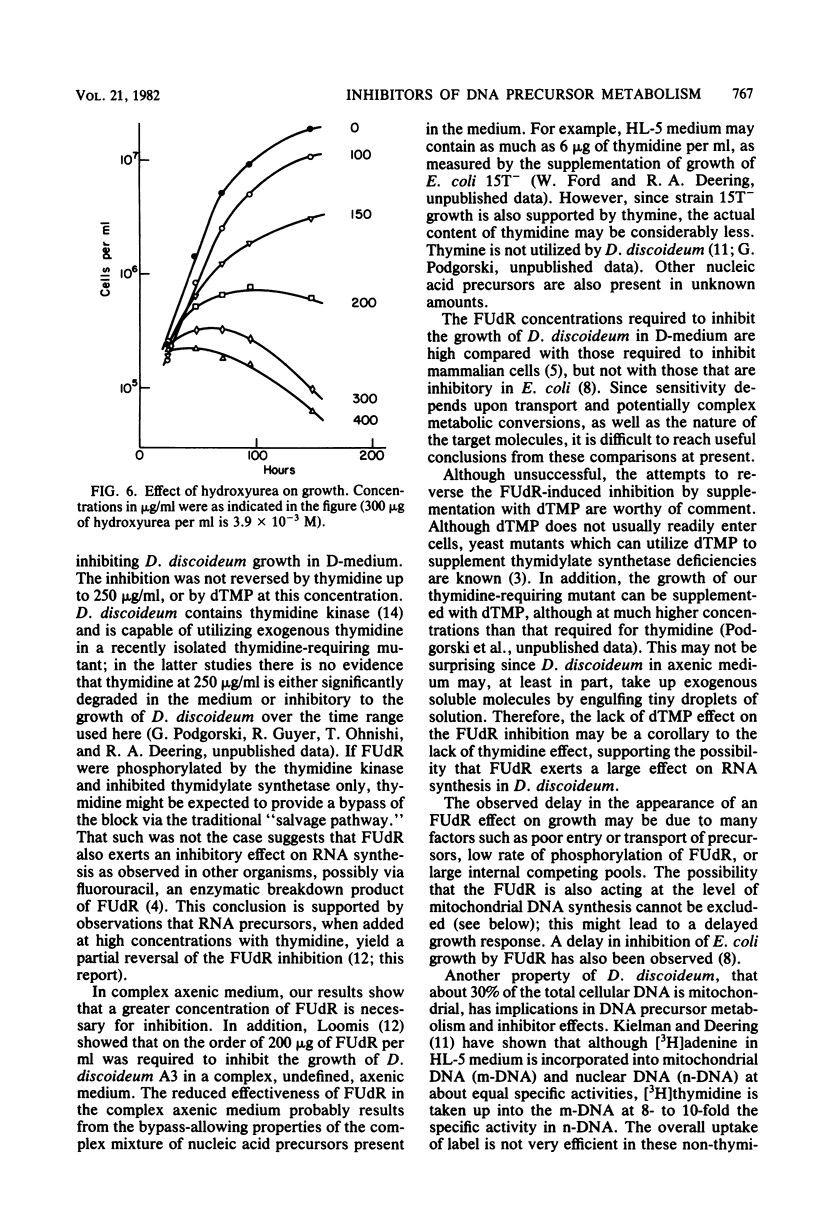
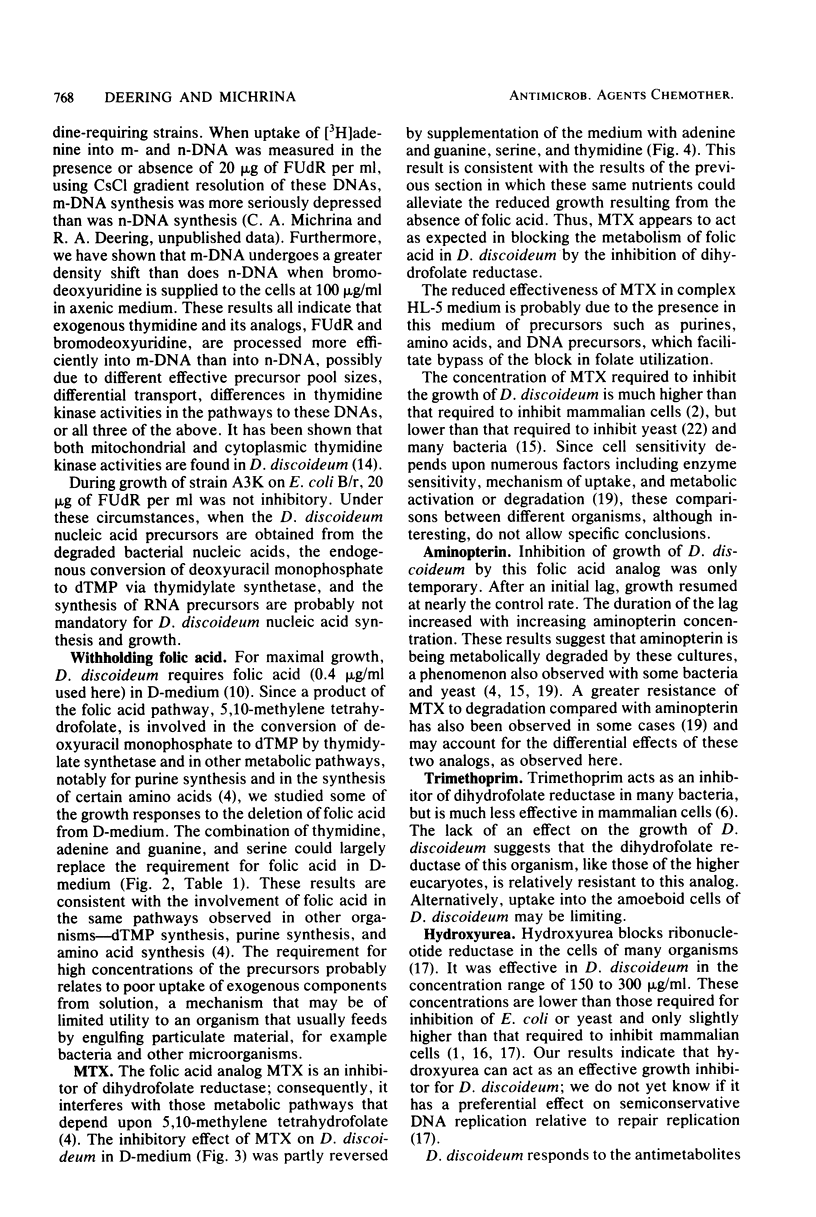
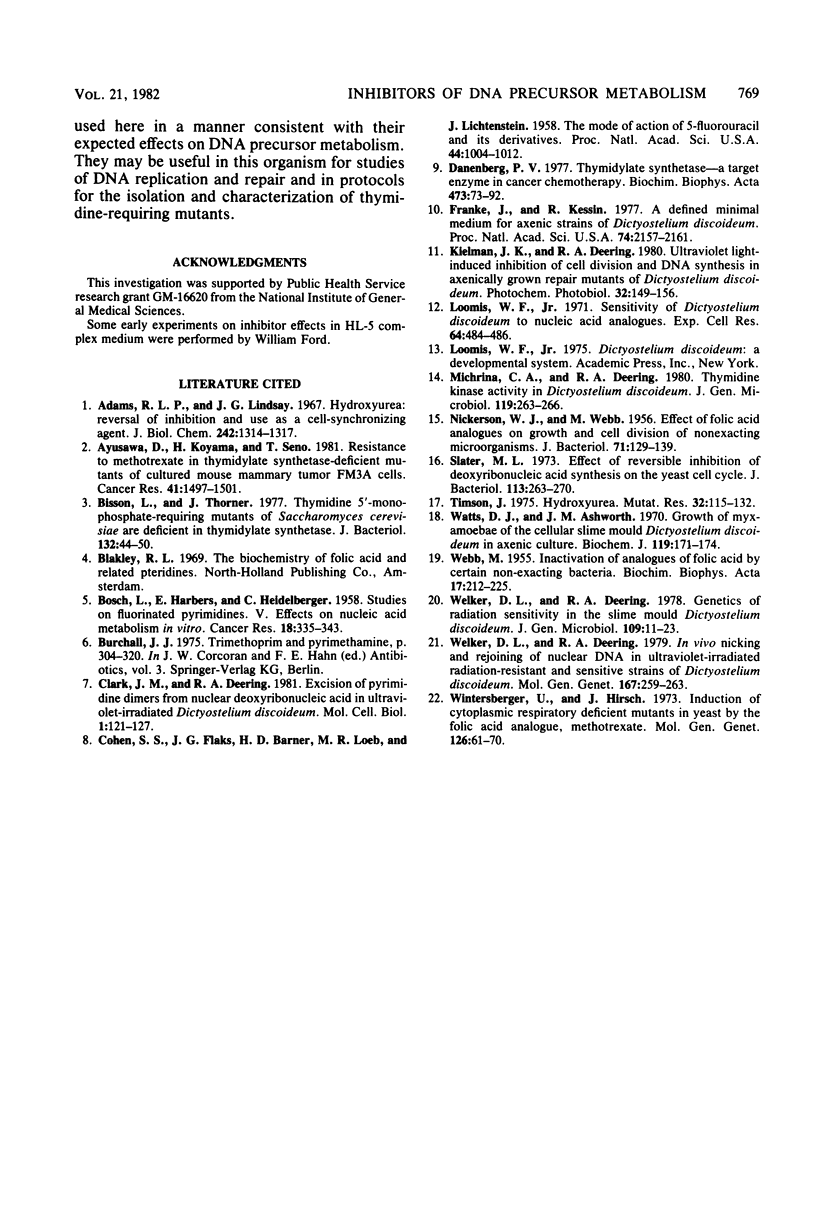
Selected References
These references are in PubMed. This may not be the complete list of references from this article.
- Adams R. L., Lindsay J. G. Hydroxyurea reversal of inhibition and use as a cell-synchronizing agent. J Biol Chem. 1967 Mar 25;242(6):1314–1317. [PubMed] [Google Scholar]
- Ayusawa D., Koyama H., Seno T. Resistance to methotrexate in thymidylate synthetase-deficient mutants of cultured mouse mammary tumor FM3A cells. Cancer Res. 1981 Apr;41(4):1497–1501. [PubMed] [Google Scholar]
- BOSCH L., HARBERS E., HEIDELBERGER C. Studies on fluorinated pyrimidines. V. Effects on nucleic acid metabolism in vitro. Cancer Res. 1958 Apr;18(3):335–343. [PubMed] [Google Scholar]
- Bisson L., Thorner J. Thymidine 5'-monophosphate-requiring mutants of Saccharomyces cerevisiae are deficient in thymidylate synthetase. J Bacteriol. 1977 Oct;132(1):44–50. doi: 10.1128/jb.132.1.44-50.1977. [DOI] [PMC free article] [PubMed] [Google Scholar]
- Clark J. M., Deering R. A. Excision of pyrimidine dimers from nuclear deoxyribonucleic acid in ultraviolet-irradiated Dictyostelium discoideum. Mol Cell Biol. 1981 Feb;1(2):121–127. doi: 10.1128/mcb.1.2.121. [DOI] [PMC free article] [PubMed] [Google Scholar]
- Cohen S. S., Flaks J. G., Barner H. D., Loeb M. R., Lichtenstein J. THE MODE OF ACTION OF 5-FLUOROURACIL AND ITS DERIVATIVES. Proc Natl Acad Sci U S A. 1958 Oct 15;44(10):1004–1012. doi: 10.1073/pnas.44.10.1004. [DOI] [PMC free article] [PubMed] [Google Scholar]
- Danenberg P. V. Thymidylate synthetase - a target enzyme in cancer chemotherapy. Biochim Biophys Acta. 1977 Dec 23;473(2):73–92. doi: 10.1016/0304-419x(77)90001-4. [DOI] [PubMed] [Google Scholar]
- Franke J., Kessin R. A defined minimal medium for axenic strains of Dictyostelium discoideum. Proc Natl Acad Sci U S A. 1977 May;74(5):2157–2161. doi: 10.1073/pnas.74.5.2157. [DOI] [PMC free article] [PubMed] [Google Scholar]
- Kielman J. K., Deering R. A. Ultraviolet light-induced inhibition of cell division and DNA synthesis in axenically grown repair mutants of Dictyostelium discoideum. Photochem Photobiol. 1980 Aug;32(2):149–156. doi: 10.1111/j.1751-1097.1980.tb04002.x. [DOI] [PubMed] [Google Scholar]
- Loomis W. F., Jr Sensitivity of Dictyostelium discoideum to nucleic acid analogues. Exp Cell Res. 1971 Feb;64(2):484–486. doi: 10.1016/0014-4827(71)90107-8. [DOI] [PubMed] [Google Scholar]
- Michrina C. A., Deering R. A. Thymidine kinase activity in Dictyostelium discoideum. J Gen Microbiol. 1980 Jul;119(1):263–266. doi: 10.1099/00221287-119-1-263. [DOI] [PubMed] [Google Scholar]
- NICKERSON W. J., WEBB M. Effect of folic acid analogues on growth and cell division of nonexacting microorganisms. J Bacteriol. 1956 Feb;71(2):129–139. doi: 10.1128/jb.71.2.129-139.1956. [DOI] [PMC free article] [PubMed] [Google Scholar]
- Slater M. L. Effect of reversible inhibition of deoxyribonucleic acid synthesis on the yeast cell cycle. J Bacteriol. 1973 Jan;113(1):263–270. doi: 10.1128/jb.113.1.263-270.1973. [DOI] [PMC free article] [PubMed] [Google Scholar]
- Timson J. Hydroxyurea. Mutat Res. 1975;32(2):115–132. doi: 10.1016/0165-1110(75)90002-0. [DOI] [PubMed] [Google Scholar]
- WEBB M. Inactivation of analogues of folic acid by certain non-exacting bacteria. Biochim Biophys Acta. 1955 Jun;17(2):212–225. doi: 10.1016/0006-3002(55)90352-8. [DOI] [PubMed] [Google Scholar]
- Watts D. J., Ashworth J. M. Growth of myxameobae of the cellular slime mould Dictyostelium discoideum in axenic culture. Biochem J. 1970 Sep;119(2):171–174. doi: 10.1042/bj1190171. [DOI] [PMC free article] [PubMed] [Google Scholar]
- Welker D. L., Deering R. A. In vivo nicking and rejoining of nuclear DNA in ultraviolet-irradiated radiation-resistant and sensitive strains of Dictyostelium discoideum. Mol Gen Genet. 1979 Jan 2;167(3):259–263. doi: 10.1007/BF00267417. [DOI] [PubMed] [Google Scholar]
- Wintersberger U., Hirsch J. Induction of cytoplasmic respiratory deficient mutants in yeast by the folic acid analogue, methotrexate. I. Studies on the mechanism of petite induction. Mol Gen Genet. 1973 Oct 16;126(1):61–70. doi: 10.1007/BF00333482. [DOI] [PubMed] [Google Scholar]


